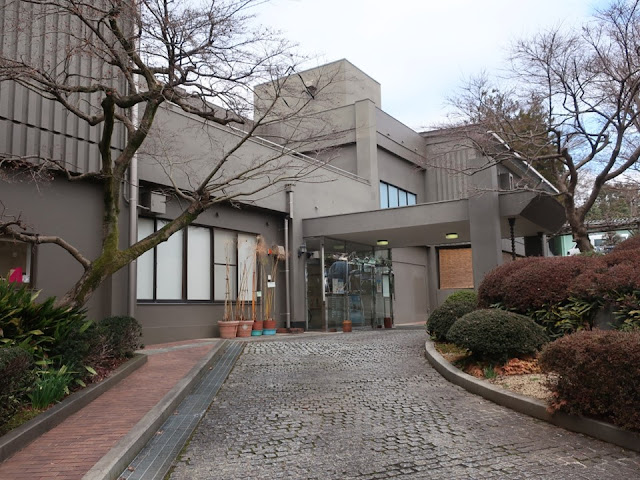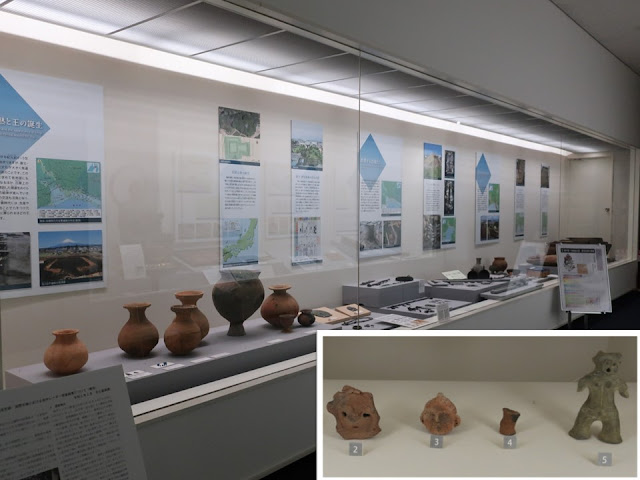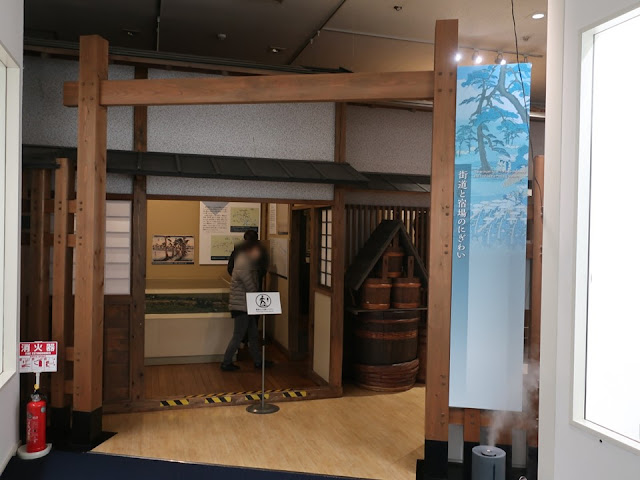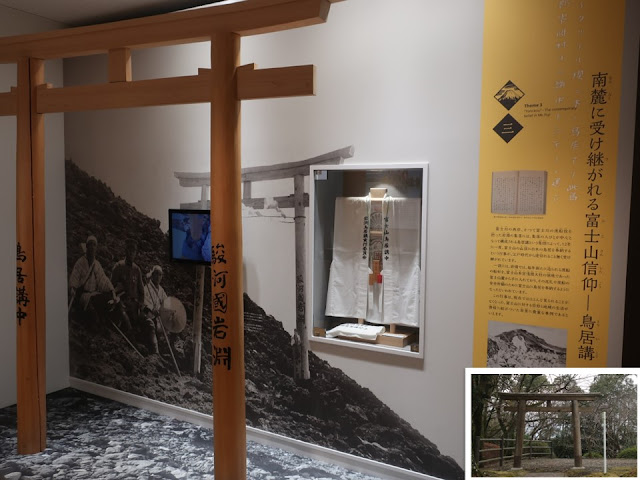Mt.Fuji has a legend of Princess Kaguya. The beautiful girl was from the inside of the bamboo tree. She went to the moon at the end of the story. The museum shows us not only the legend but also its folklore, which is the theme of this blog. It is at Hiromi Park in Shizuoka Prefecture.
The theme of the exhibition room is “The history of the people living around Mt.Fuji”. The life at the foot of the volcano is explained since the ancient time. The photo in lower right is small cray dolls in the primitive age.
展示室のテーマは、「富士に生きる」。富士の麓の町としての歴史が古代から紹介されています。右下は小さな土偶です。
The Yoshiwara-juku (post town) is shown in the section above. It is named “The highway and the busy post town”.
「街道と宿場のにぎわい」では、吉原宿が紹介されています。
Those are guidebooks in the Edo period (1603~1868). Specialties of post towns are also written.
「中仙東海道 みやこのぼり」(上)と「諸国道中記」(下)、江戸時代のガイドブックです。宿場の名物も紹介されています。
White sake (cloudy liquor) was a specialty of Moto-Ichiba.
「富士の白酒」は間宿・本市場の名物でした。
There is the full-scale model of the inn “Tai-ya”, which is run as a hotel even until now (https://www.fuji-taiyaryokan.jp/).
鯛屋さんは、今もビジネス旅館として営業しています(https://www.fuji-taiyaryokan.jp/)。
The section above exhibits the water transportation of Fuji River. People crossed the river by ship. They also brought daily necessities by ship. Rice, tobacco and so on came from the upstream region. On the other hand, salt, ceramics and so on went there.
時代は下って、富士川の舟運。富士川は舟で渡りました。また、上流の甲斐国へは、塩や瀬戸物などを運び、甲斐国からは米や煙草などを運んできました。
The river port “Iwabuchi” prospered. The locals thank the river for its blessings and offer torii-gate at the top of Mt. Fuji every twelve years.
富士川左岸の岩淵は大変栄えました。岩淵では、その恵みに感謝して、12年に一度、富士山頂に鳥居を奉納しています。
The members of Torii-kou preserve the tradition. The gate which was offered in 2004 was moved to the museum site (lower right).
鳥居講がその伝統を受け継いでいます。2004年に奉納された鳥居が博物館のそばに移築されています(右下)。
There are women and a military man in the group photo of the kou in the early 20th century.
大正期の講には、女性も多く、軍人もいます。
Mt.Fuji worship、富士山信仰
People in villages on the foot of Mt.Fuji go ascetic practice to the mountain.
山麓の村々から、富士山へ修行に行きます。
The mountain ascetics pray for people in their village even until now.
修験者は山麓の村で祈祷やまじないを行います。それは、今も続いています。
Mt.Fuji is something divine. From the Tomei Expressway.
富士山は、神を感じさせますね(富士川SA近くから)。
The legend of Princess Kaguya is exhibited at the section above. She and heavenly maidens are written in the history and legend books in the Mt.Fuji area. This is the theme of the museum, but I uploaded only one picture (sorry).
富士山のかぐや姫伝説を紹介するコーナーです。富士山縁起には、天女やかぐや姫が登場します。この博物館のテーマですが、写真一枚だけですみません。
Visited in February, 2023
English brochure: https://museum.city.fuji.shizuoka.jp/pdf/pamphlet-english.pdf
Official website: https://museum.city.fuji.shizuoka.jp/
(in Japanese, many information) accessed in July, 2023
Previous post (museum in the neighboring city): Numazu City History and Folklore
Museum、沼津市歴史民俗資料館
Next post (annex
of this museum、分館です): Mt.Fuji and Princess Kaguya
Museum (2/2)、富士山かぐや姫ミュージアム part2

















Comments
Post a Comment